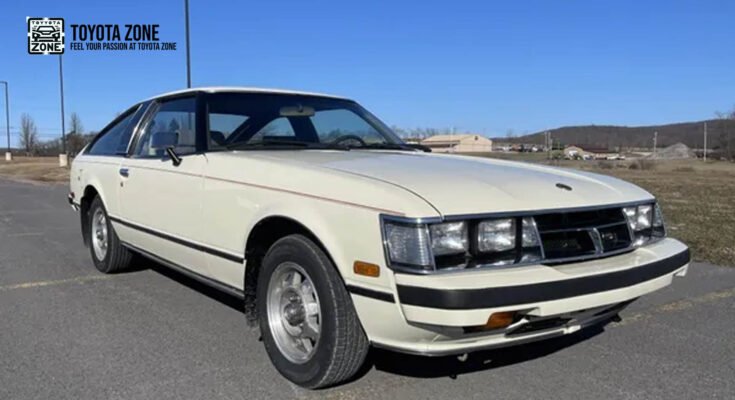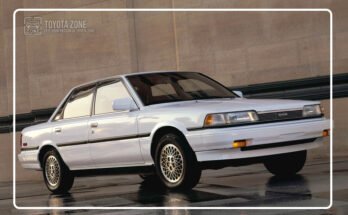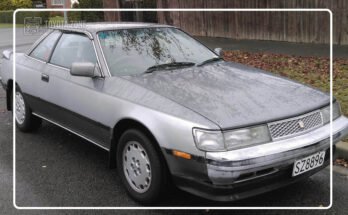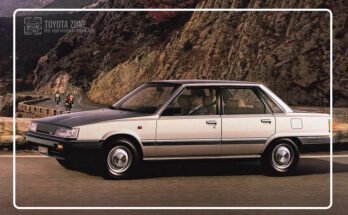Toyota Supra MK1
Overview
First produced in 1978 and discontinued in 1981, the Toyota Supra MK1 constitutes the brazen beginning of the long-lived line of Supras. Initially called the Toyota Celica Supra, the MK1 was a sportier, more powerful offshoot of the Toyota Celica, featuring an increased wheelbase, unique styling, and Toyota’s first inline-six engine with electronic fuel injectors for the U.S. market.
The longitudinal, rear-drive configuration first-generation model realized a confluence of modern technology with state-of-the-art suspension work to create a vehicle that was smooth yet involving. Although often overshadowed by other, more famous later editions of the model, it is viewed with much admiration by enthusiasts due to its classy styling, relative rarity, and role played in Toyota’s evolution into a high-performance car manufacturer.
MK1 Notable Features
The Toyota Supra MK1 introduced several notable features and technological advancements that set it apart in the late 1970s and early 1980s. Here are some of the key features that made the MK1 stand out:
| Feature | Description |
| Inline-Six Engine with EFI | 2.6L 4M-E engine with electronic fuel injection (EFI), making it the first Toyota engine with EFI in the U.S., providing better fuel efficiency and smoother power delivery. |
| Independent Rear Suspension | Enhanced handling and ride comfort with an independent rear suspension, distinguishing it from the Toyota Celica. |
| Extended Wheelbase & Styling | Longer wheelbase for added interior space, unique front-end design with pop-up headlights, and a more aggressive stance compared to the Celica. |
| Advanced Interior Features | Included amenities like cruise control, adjustable lumbar support, power windows, tachometer, and performance-focused gauges, adding a touch of luxury and driver-focused design. |
| Rear-Wheel Drive Layout | Classic sports car configuration, enhancing weight distribution and driving dynamics, appealing to performance enthusiasts. |
| Distinct Branding | Although originally named “Celica Supra,” it featured unique “Supra” badging, establishing a separate identity and setting the stage for future, independent Supra models. |
Supra MK1 Price
When introduced in 1978, the starting price of the MK1 Supra in the USA was about $10,000 USD. This varied slightly, depending on trim and option packages, but essentially positioned this model as a mid-range sports coupe. In Today’s Dollar; Adjusted for inflation, this regression would equal about $45,000 USD, rendering it rather a mundane sports car by contemporary standards.
Engine options and specifications
The Toyota Supra MK1 offered a few different engine options throughout its production from 1978 to 1981, depending on the market.
2.0L M-EU Inline-Six (Japan)
| Type | Inline-six, SOHC |
| Displacement | 2.0 liters |
| Output | 110 hp |
| Torque | 120 lb-ft |
| Fuel System | Electronic fuel injection |
| Market | Japan |
2.6L 4M-E USA
| Type | Inline-six, SOHC |
| Displacement | 2.6 liters |
| Output | 110 hp |
| Torque | 136 lb-ft |
| Fuel System | Electronic fuel injection |
| Market | U.S.A, Canada |
MK1 Engine Performance
The Toyota Supra MK1, or Celica Supra, had a commendable performance for its time, especially considering it was one of the early entries into the sports car segment by Toyota. Here are some key aspects of its performance:
Engine and Power
- Engine Choices: The MK1 was originally equipped with a 2.0L inline-six (M-series) engine that produced approximately 110 hp. Late in its production run, a 2.6-liter version of this motor was made available in some markets, subsequently cranking out an even larger amount of power.
- Torque: Supplying around 130 lb-ft (177 Nm) of torque for its early engines made for decent acceleration.
Performance
- 0-60 mph (0-100 km/h): Could accelerate to 60 mph in about 8.5-9 seconds, making it competitive among sports coupes during the late 1970s through 1980s.
- Top Speed: The top speed was generally around 120 mph (193 km/h), but depending on the exact model and government regulations of its market.
Transmission
The MK1 had either a 4-speed automatic or a 5-speed manual, providing a good balance between performance and engagement of the driver.
Handling and Suspension
- The Toyota Supra MK1 had been built on a longer wheelbase than the standard Celica, which improved stability and handling.
- The rear-wheel-drive configuration certainly gave it a more sportier characteristic.
- Independent front suspension combined with a live axle in the rear was standard for its time, giving the MK1 a good blend of comfort and handling.
Braking System
The system consists of front disc brakes and rear drum brakes, but this was the norm at that period.
Driver’s Experience
- The MK1 offered a sporty drive with good steering response and a balanced chassis, making it enjoyable on winding roads or highway drives.
- The driver experience was aimed at the excited audience of…
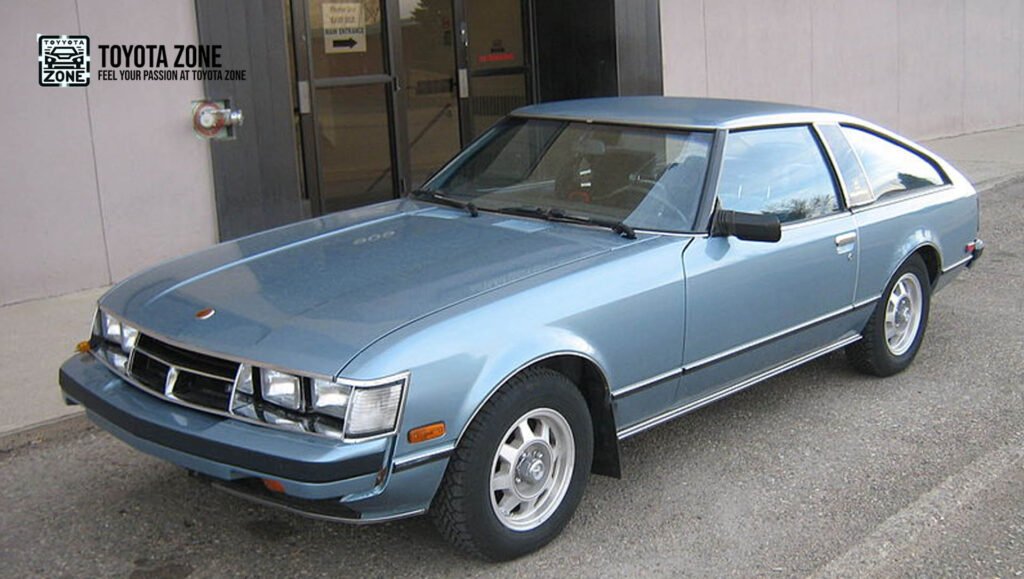
Interior Features
| Feature | Description |
| Seating | Sport-style front bucket seats with side bolstering for driver and passenger support. |
| Upholstery Options | Available in cloth or optional leather upholstery, adding a premium feel in higher trims. |
| Dashboard Layout | Driver-focused dashboard with all controls within easy reach, contributing to a sporty feel. |
| Analog Instrumentation | Full analog gauge cluster including speedometer, tachometer, fuel, temperature, and oil gauges. |
| Center Console | Large center console featuring controls for climate, audio, and storage compartment. |
| Steering Wheel | 3-spoke leather-wrapped steering wheel with a sporty, ergonomic design. |
| Audio System | AM/FM radio with cassette player, considered premium for the time; some trims had upgraded sound. |
| Climate Control | Basic climate control system with optional air conditioning for added comfort. |
| Storage Options | Includes a glove box, center console storage, and door pockets for small-item storage. |
| Rear Seating | 2+2 seating configuration; rear seats are smaller and suited for occasional passengers. |
| Interior Trim Accents | Wood-grain or metallic accents on the dashboard and door panels, depending on the trim level. |
| Sunroof (Optional) | Available power or manual sunroof, adding ventilation and a sportier open-air feel. |
| Electric Windows | Power windows available in higher trim levels for added convenience. |
| Door Panels | Padded armrests with matching trim and integrated door handles. |
| Cargo Space | Decent-sized trunk for a sports coupe, practical for luggage or grocery storage. |
| Interior Lighting | Dome light and reading lights for added convenience. |
Exterior Features
| Feature | Description |
| Overall Design | Long, sleek silhouette with aerodynamic lines for a sporty, aggressive look. |
| Pop-Up Headlights | Iconic pop-up headlights that contribute to a clean look when closed. |
| Front Grille | Distinctive grille with the Supra badge, adding to its performance identity. |
| Hood Length | Extended hood for a classic sports car profile, emphasizing engine power. |
| Rear Taillights | Unique, horizontally laid-out taillights, giving it a recognizable rear profile. |
| Color Options | Available in various colors, including metallic finishes like silver, red, and blue. |
| Body Shape | 2-door coupe design emphasizing a classic sports coupe silhouette. |
| Rear Spoiler (Optional) | Some models featured a rear spoiler, improving down-force and style. |
Conclusion
Future generations were built on the sporty styling, comfort, and performance that the Toyota Supra MK1 (Celica Supra) brought to the Supra nameplate. The MK1 had a driver-focused interior with supportive bucket seats and analog gauges, a sleek, long-hood design, and recognizable pop-up headlights. Even though its performance was modest by today’s standards, it was competitive at the time and provided a pleasant and well-balanced driving experience. The MK1 left a lasting legacy and cleared the path for the iconic models that followed, establishing the Supra as a serious contender in the sports car market.
Ref: Wikipedia
View Also:

